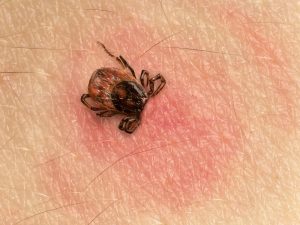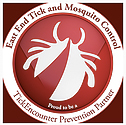May is Lyme disease awareness month!
So, what is Lyme disease? We don’t think there has ever been an illness that has been so incredibly misunderstood before in the course of history. Is it hard to catch and easy to get rid of? Easy to catch and hard to get rid of? Or something in-between? Is Lyme disease a bacteria? A virus? A bacteriophage? A parasite? How do you get it, and how do you know if you have it?
The best way to answer these questions and provide the most accurate information available is to cite peer-reviewed scientific articles from medical journals. But no worries! We will translate them into plain English for you!
How is Lyme Disease Spread?
Not all ticks carry diseases! Lyme Disease is carried by the deer tick, however, not all of these ticks will carry lyme disease. Yes, you heard that right, it’s the luck of the draw. So, although you may have been bitten by a tick, and it was even attached to you for longer than 24 hours, there is a chance nothing will happen. It is estimated that roughly 50% of the ticks in our area carry the pathogen that causes Lyme Disease.

What causes Lyme Disease?
Lyme Disease is caused by a type of bacteria called “Borrelia Burgdorferi”. Borrelia is a form of bacteria discovered by microbiologist Amedee Borrell at the Pasteur Institute in Paris in the 1890s. There are currently 52 known species of Borrelia. Lyme Disease, specifically, is caused by one specific DNA form of spirochete named Borrelia Burgdorferi, named for the American Scientist who discovered it: Wilhelm “Willy” Burgdorfer. A spirochete is a long, slender worm-shaped organism that can swim using a flagella which is a “whip-like structure that allows a cell to move”. Spirochetes are a hardy form of bacteria that have a double cell wall. That means that most bacteria only wear a sweater, but Borrelia wear a sweater and a jacket. Some scientists claim that when viewed under a microscope, Borrelia Burgdorferi are pleomorphic organisms. This means that they can take many forms and change their exterior jacket to a raincoat, or a windbreaker, etc. in the science world it’s called “antigenic variation.” Sadly, the human immune system can have an extremely hard time keeping up with this “changing of jackets” and sometimes fails to produce enough antibodies to receive a proper diagnosis of Lyme. It is this antigenic variation that makes the serology tests so woefully inaccurate.
How to test for Lyme Disease?
One of the ways Lyme Disease is diagnosed is by the infamous red “bullseye” rash. Although this rash does occur in the event of Lyme Disease from a tick bite, it is not always
There are 2 ways to test for Lyme Disease infection: A Serology test and a Direct Test.
Serology Test: A serology test relies on the performance of your immune system to detect the presence of antibodies (immune response) to an antigen (germ/bacteria/spirochete) like Borrelia Burgdorferi. With this test, you are looking for the evidence/smoking gun in the crime.
Direct Test: A direct test looks for the presence of the spirochetes themselves. Here, you are looking for the actual criminal.
This becomes extremely important to understand because not all immune systems are created equal! However, if the criminal (spirochete) has been in the house (your body), then a direct test like a direct IFA (immunofluorescence assay), blood culture, or a FISH (fluorescence in situ hybridization) test should find the culprit. Indirect tests like the ELISA has been estimated to miss as many as 35% of all culture-proven Lyme Disease infections. In any case, the takeaway lesson here is: if you think you have Lyme disease, talk to your doctor about laboratory studies that perform direct testing on your blood.
Lyme Disease is ultimately immunosuppressive, and so the longer it goes on undetected, the less likely you will get a positive result from a standard ELISA or Western Blot (serology) lab test. The International Lyme and Associated Diseases Society report that “Of patients with acute culture-proven Lyme disease 20-30% remain seronegative on serial western blot sampling”. In plain English, that means that the sickest patients have Borrelia Burgdorferi spirochetes grown out of their blood even though the ELISA and Western Blot serology tests came back negative for Lyme. In the laboratory world, this is called a “false negative test result.”
According to the Centers for Disease Control, Lyme disease is the fastest growing vector-borne (from insects) infectious disease in the United States. The CDC reports that 300,000 cases of Lyme disease are reported annually. As you can imagine, when left undiagnosed, these corkscrew-shaped bacteria can wreak havoc in the body becoming the “great imitator” of many diseases for all the misery they cause. They can wiggle their way into your heart and brain, and the results are devastating to your health and mental wellness. If you think you have Lyme Disease, please see a doctor and ask for a direct antigen test for Borrelia Burgdorferi.
Tune in next month for our best tick bite prevention strategies!
Lyme Disease FAQ in NY
Serving Southold





